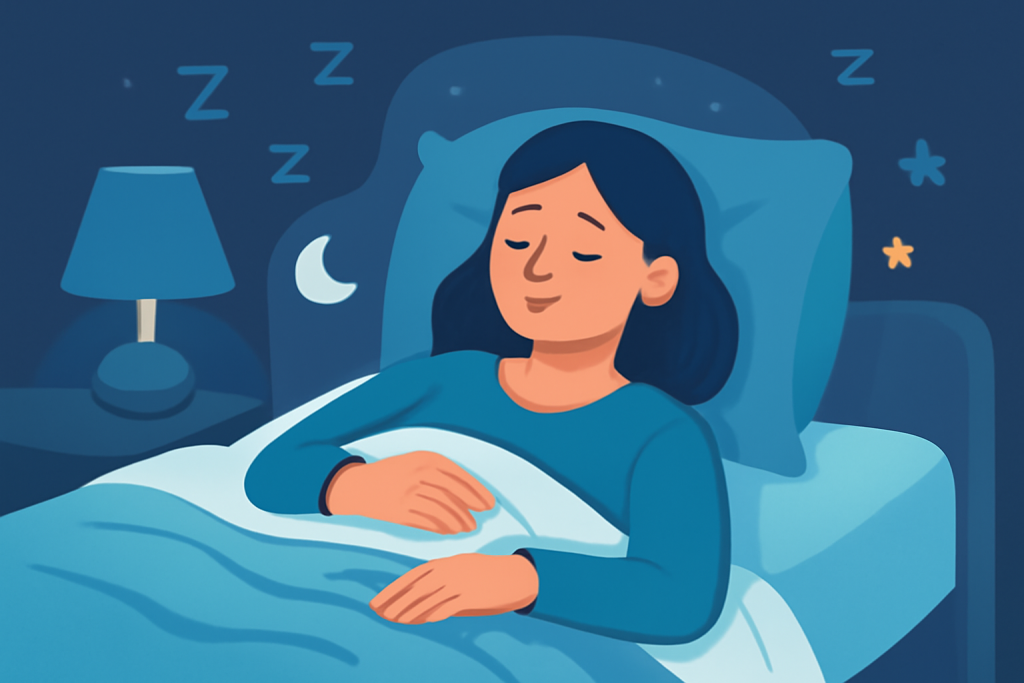Sleep hygiene has never been more crucial than today. With increasing stress, screen time, and lifestyle disruptions, poor sleep is linked to serious health risks. This article explains why good sleep hygiene matters and shares practical, research-backed ways to improve your nightly rest.
Struggling with restless nights? You’re not alone. Sleep hygiene—the habits that promote quality sleep—is now a vital health topic as more people suffer from insomnia and poor rest. Learn how simple changes can drastically improve your sleep and overall wellbeing.

What is Sleep Hygiene and Why Does It Matter?
Sleep hygiene refers to a set of behavioral and environmental practices that support consistent, uninterrupted, and restorative sleep. It includes routines like regular sleep schedules, limiting screen exposure before bed, and creating a calming sleep environment.
Why is sleep hygiene critical? Modern lifestyles are disrupting natural sleep patterns, contributing to widespread sleep deprivation. According to the Centers for Disease Control and Prevention (CDC), about one in three adults don’t get enough sleep regularly, increasing their risk for chronic conditions such as heart disease, diabetes, obesity, and depression (CDC, 2022). Poor sleep hygiene doesn’t just cause daytime fatigue; it compromises cognitive functions, emotional regulation, and immune defense, making good sleep hygiene a cornerstone of overall health.
Emerging Trends in Sleep Hygiene: Tech, Mindfulness, and Personalized Coaching
Sleep hygiene is evolving alongside technology and new behavioral health insights. Here are three key trends shaping how people improve their sleep today:
1. The Rise of Sleep Tech and Smart Devices
Technology is a double-edged sword for sleep hygiene. On the one hand, excessive screen time exposes users to blue light, which suppresses melatonin production—the hormone responsible for sleepiness—leading to delayed sleep onset and reduced sleep quality. On the other hand, innovative sleep technology offers powerful tools to counteract these effects.
Devices such as smart mattresses can adjust firmness based on your sleep position and temperature preferences. Sleep trackers like the Oura Ring and Fitbit monitor sleep stages (light, deep, REM) and provide personalized feedback on how lifestyle habits impact rest. Blue light blocking glasses and smartphone apps that filter out disruptive light in the evening help users fall asleep faster (Harvard Health Publishing, 2023).
These technologies create awareness and encourage better sleep hygiene by making sleep patterns visible and actionable. However, experts caution that relying solely on gadgets is not enough—behavioral changes remain essential.
2. Mindfulness and Relaxation Techniques for Better Sleep
The integration of mindfulness into sleep hygiene routines is gaining momentum. Stress and anxiety are common barriers to falling and staying asleep. Mindfulness meditation, progressive muscle relaxation, and breathing exercises can calm the nervous system and reduce pre-sleep racing thoughts.
Clinical research supports mindfulness-based approaches for improving sleep quality and reducing insomnia symptoms. A 2019 meta-analysis found that mindfulness interventions significantly improved subjective sleep quality, sleep latency (time to fall asleep), and reduced insomnia severity (Rusch et al., 2019).
Many wellness apps now offer guided sleep meditations designed to soothe the mind and body, making relaxation techniques more accessible than ever before.
3. Personalized Sleep Coaching and Behavioral Therapy
The gold standard treatment for chronic sleep difficulties is Cognitive Behavioral Therapy for Insomnia (CBT-I). This therapy focuses on identifying and changing unhealthy thoughts and behaviors that contribute to poor sleep hygiene. Instead of medication, CBT-I empowers patients with tools and habits for long-lasting improvements.
Digital platforms delivering CBT-I remotely have expanded access to this effective therapy, making personalized coaching affordable and convenient. Users receive customized plans addressing specific issues such as inconsistent bedtimes, daytime naps, caffeine use, or bedroom environment. This tailored approach is crucial because sleep hygiene is not one-size-fits-all.
Practical Tips to Improve Your Sleep Hygiene
Improving sleep hygiene can begin with small, manageable changes. Below are science-backed strategies to optimize your sleep environment and habits:
1. Stick to a Consistent Sleep Schedule
Going to bed and waking up at the same time daily—even on weekends—strengthens your circadian rhythm and enhances sleep quality. Irregular schedules disrupt the body’s internal clock and reduce deep sleep phases.
2. Limit Screen Time Before Bed
Avoid electronic devices at least one hour before bedtime or use blue light filters and glasses to reduce melatonin suppression. If unavoidable, enable night mode on devices, which reduces blue wavelengths.
3. Create a Comfortable Sleep Environment
Keep your bedroom quiet, cool (around 65°F or 18°C), and dark. Use blackout curtains, eye masks, or white noise machines if necessary. Comfortable mattresses and pillows tailored to your sleep preferences also improve rest quality.
4. Develop a Relaxing Pre-Sleep Routine
Establish calming activities before bed, such as reading a book, taking a warm bath, or practicing gentle yoga stretches. Avoid stimulating activities and stressful conversations during this wind-down period.
5. Watch Your Diet and Exercise
Limit caffeine intake after midday and avoid heavy meals close to bedtime, which can cause discomfort. Regular physical exercise supports healthy sleep, but intense workouts should be scheduled earlier in the day to prevent interference with falling asleep.
6. Use Technology Wisely
Consider sleep trackers or apps that monitor your sleep patterns and provide actionable advice. Devices like dawn simulators that gradually increase light in the morning can support natural wake-up times and reinforce circadian rhythms.
Why Sleep Hygiene is a Public Health Priority
The consequences of poor sleep hygiene extend beyond individual wellbeing, representing a significant public health concern. Chronic insufficient sleep contributes to millions of lost workdays, reduced productivity, and increased healthcare costs annually.
Recognizing this, public health organizations are incorporating sleep education into wellness campaigns. Employers increasingly integrate sleep hygiene awareness into workplace health programs, offering resources such as nap pods or flexible scheduling to promote better rest.
Addressing sleep hygiene is a low-cost, high-impact strategy to reduce the burden of chronic diseases and improve mental health on a societal scale. As awareness grows, prioritizing sleep hygiene could transform health outcomes globally.
Final Thoughts
The importance of sleep hygiene cannot be overstated in today’s fast-paced world. Poor sleep habits and environments contribute to a cascade of health risks, while better sleep hygiene offers a straightforward path to improved physical and mental wellbeing.
By adopting consistent schedules, managing technology use, cultivating relaxation routines, and considering personalized coaching if needed, anyone can enhance their sleep quality. Emerging trends like sleep tech and mindfulness make this journey easier and more effective.
Sleep hygiene is more than just a buzzword—it’s a foundation for a healthier life. Start prioritizing your sleep today, and you’ll likely notice profound benefits tomorrow and beyond.
References
- Centers for Disease Control and Prevention (CDC) (2022) “Short Sleep Duration Among US Adults.” Available at: https://www.cdc.gov/sleep/data_statistics.html (Accessed: 28 May 2025).
- Harvard Health Publishing (2023) “Blue Light Has a Dark Side.” Harvard Medical School. Available at: https://www.health.harvard.edu/staying-healthy/blue-light-has-a-dark-side (Accessed: 28 May 2025).
- Rusch, H.L., et al. (2019) ‘The effect of mindfulness meditation on sleep quality: a systematic review and meta-analysis of randomized controlled trials,’ Annals of Behavioral Medicine, 53(6), pp. 509-523. DOI: 10.1093/abm/kay023.






